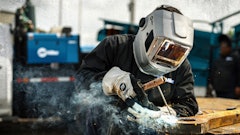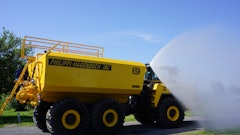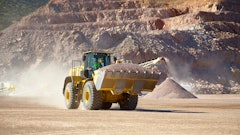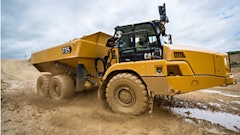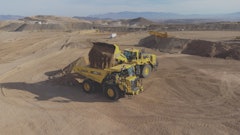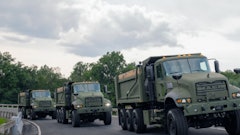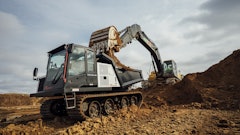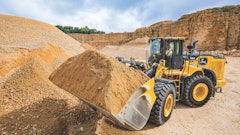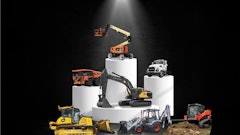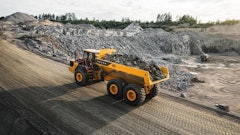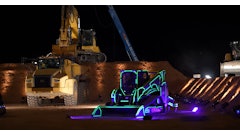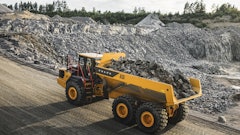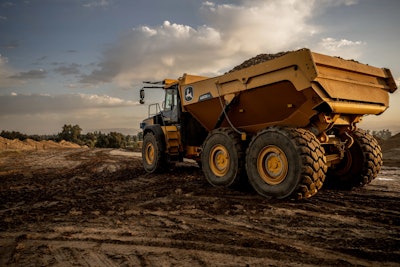
In its quest to develop technologies to meet the challenges of modern jobsites, John Deere has developed an autonomous articulated dump truck for the construction industry. For years, Deere has been working on its cross-application rev2 platform, which incorporates autonomous technology into heavy equipment. Deere, long known for its green tractors and expertise in agriculture, has been working to incorporate its rev2 technology into equipment used in other industries it serves, namely commercial landscaping and construction.
Today’s Construction Challenges
Its one thing to develop self-piloted vehicles for use in large, open fields, like farms and golf courses. It's another thing entirely to create a self-piloted, heavy-duty truck for a construction jobsite, where other people and vehicles are frequently moving in and out of that space. Incorporating autonomous technology into construction equipment is a monumental risk for manufacturers, but one worth striving for, given the industry’s greatest challenge: finding skilled labor.
The construction industry is short 500,000 workers give or take, according to the U.S. Census Bureau and Labor Department. That’s a big number, and it might be difficult conceptualize. So Deere officials put it another way at a recent press briefing: more than 80% of Deere’s construction customers are severely short on skilled workers. It’s a similar story for the agricultural and commercial landscaping sectors. The stark truth of the matter is this: the employers doing some of the world’s most significant work will never have enough employees. The solution, according to Deere and many other manufacturers, is autonomous technology.
"We're using autonomy not just to solve labor challenges but to develop solutions that truly benefit humanity—whether it's growing food, building infrastructure, or creating green spaces everyone can enjoy,” Jahmy Hindman, John Deere's senior vice president and chief technology officer, said at a press event previewing the company's latest autonomous technology.
Tapping Into Construction
A few years ago, Deere introduced an autonomous tractor that is in the testing phase at a small selection of agricultural operations. This week, Deere is unveiling its latest iteration in autonomous mowers, as well as its first autonomous construction equipment: an articulated dump truck (ADT) for use in mining and quarry environments. Deere is introducing these machines and more at CES 2025 in Las Vegas, which takes place from Jan. 7-10.
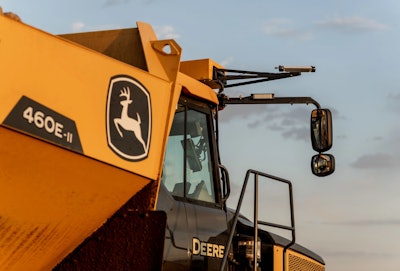 The technology incorporates six pairs of stereo cameras and uses satellite maps for navigation.John Deere
The technology incorporates six pairs of stereo cameras and uses satellite maps for navigation.John Deere
Deere engineers are working closely with customers in the construction and mining sectors to develop the autonomous technology used in the ADT. The technology incorporates six pairs of stereo cameras and uses satellite maps for navigation. The tech stack includes perception, navigation, and vehicle controls, which communicate data from the truck to an operations center platform through the use of StarFire guidance and Starlink. The truck's autonomous operation is designed with the ability to adapt to changing conditions. The operations center includes a display that shows the ADT's view of its environment, including segmentation models and classification of objects.
“A quarry is a complex and tough environment to work in, right? So if you think about driving in an ADT, it's not simple, right? If you're in your car, you've got Google Maps that tells you where you need to go. You have ABS that'll kick in to keep you safe,” said Maya Sripadam, senior product manager, autonomy at Blue River Technology, which is developing the technology with Deere. “(When) you're on a smooth asphalt road in a quarry, an operator is not only responsible for moving this giant machine, he has to now communicate with everybody else to let them know when he's going to get to the right location, to ensure that the excavator or the loader is ready to take materials to the crusher, and he's got to do all of that and keep everybody safe. So it's a super, super tough job.”
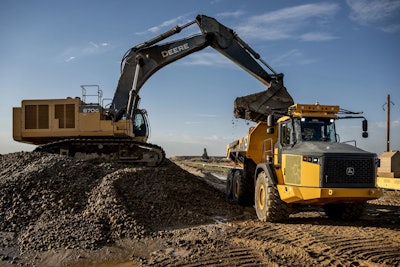 The truck's autonomous operation is designed with the ability to adapt to changing conditions.John Deere
The truck's autonomous operation is designed with the ability to adapt to changing conditions.John Deere
Nicknamed “Dusty,” the dump truck autonomously handles tasks like slowing down for obstacles, pulling aside for passing vehicles, and coordinating with other equipment, such as water trucks, to adapt to real-time conditions. The ADT is designed to address labor shortages and jobsite delays caused by worker turnover or absences, improving operations and maintaining productivity. The ADT can travel 30 mph loaded.
Watch the ADT in action:
Due to the complexity of the construction jobsite, Deere added to its tech stack when developing the autonomous ADT, Sripadam said.
“You can think of this machine as navigating on a road where other vehicles are also going to be present,” she said. “The truck is going to have the ability to see an object in the distance and slow down. It'll also have the ability to, for example, pull aside if another vehicle needs to pass it.”
Deere is upgrading hardware for steering, velocity control, and dump actions with functionally safe components, rigorous testing, and decades of expertise to ensure reliability in rugged environments, starting with simulations and progressing to real-world applications in customer quarries.
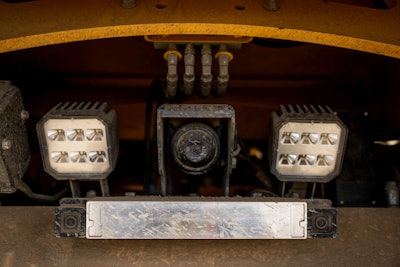 Deere is upgrading hardware for steering, velocity control, and dump actions with functionally safe components, rigorous testing, and decades of expertise to ensure reliability in rugged environments, starting with simulations and progressing to real-world applications in customer quarries.John Deere
Deere is upgrading hardware for steering, velocity control, and dump actions with functionally safe components, rigorous testing, and decades of expertise to ensure reliability in rugged environments, starting with simulations and progressing to real-world applications in customer quarries.John Deere
“We're combining that with controls, the right communications and connectivity, so we can test everything we've developed, first in a simulation environment, then we apply it to the truck, and the best part is that we get it out to a customer, a quarry, for actual use,” said Kristen Cadman, advanced research and development manager, construction and forestry, for Deere. “I know that this sounds very delicate, and it can be, however, we have 70 years in the construction business, and we're taking a lot of our know-how and rigorous testing to make sure that all of the hardware is ruggedized to survive in rocky and dusty environments.”
The ADT is in development, with no hard release date set, and is being tested in Iowa. Future ADT advancement areas include intelligent dumping and the ability for the truck to reposition itself. The technology will eventually be available for retrofits, which dealers will handle.
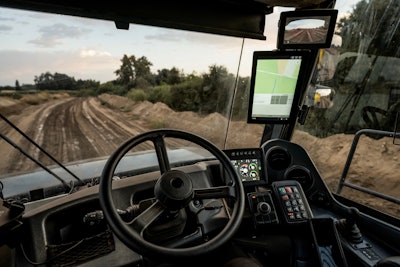 The ADT is in development, with no hard release date set, and is being tested in Iowa.John Deere
The ADT is in development, with no hard release date set, and is being tested in Iowa.John Deere
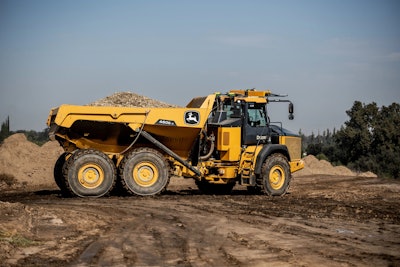
![Hcm Ax Landcros Dual Branded Logo[25]](https://img.forconstructionpros.com/mindful/acbm/workspaces/default/uploads/2025/11/hcmaxlandcros-dual-branded-logo25.Qhg3vUCjoK.jpg?auto=format%2Ccompress&bg=fff&fill-color=fff&fit=fill&h=100&q=70&w=100)
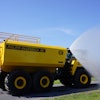
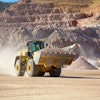
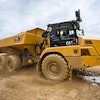
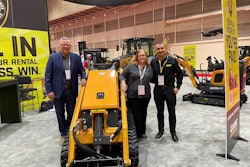
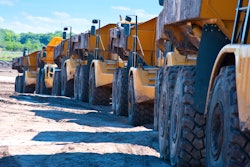
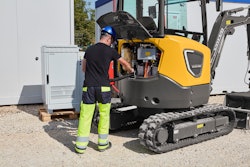

![Hcm Ax Landcros Dual Branded Logo[25]](https://img.forconstructionpros.com/mindful/acbm/workspaces/default/uploads/2025/11/hcmaxlandcros-dual-branded-logo25.Qhg3vUCjoK.jpg?ar=16%3A9&auto=format%2Ccompress&bg=fff&fill-color=fff&fit=fill&h=135&q=70&w=240)
